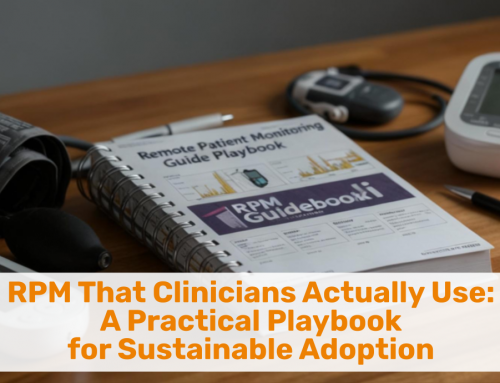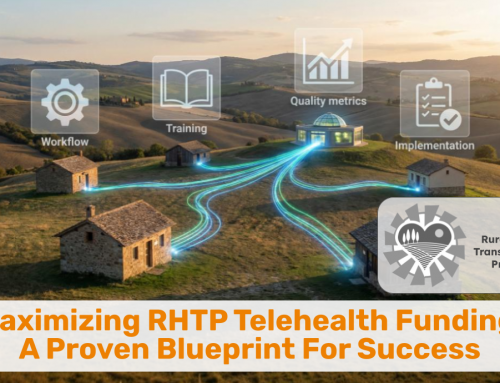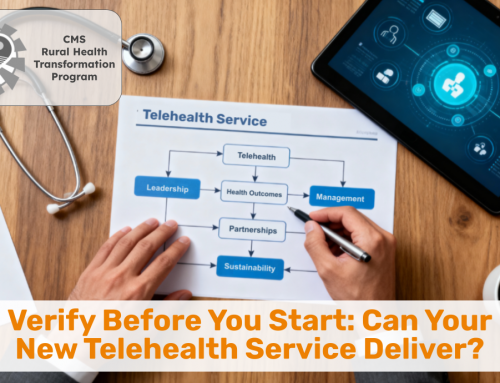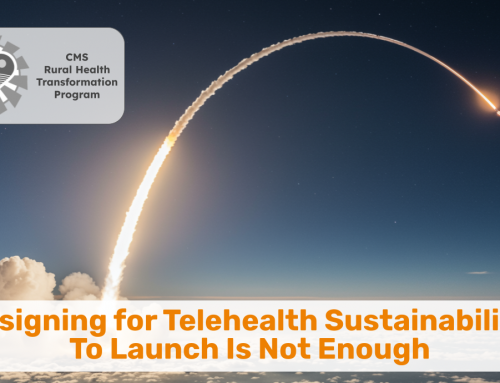Trigger warning: This article contains an unusually high number of overused quotes.
Crises in healthcare — whether they involve financial pressures, policy changes, or unexpected disruptions — often lead organizations to retrench, focusing solely on immediate survival. The instinct is understandable: when funding sources are threatened and policies shift unpredictably, innovation can feel like a luxury rather than a necessity.
However, history and experience show that innovation is precisely the tool healthcare leaders need to navigate and overcome crises. The key is to adopt a structured, strategic approach that enables rapid AND sustainable innovation to provide long-term resilience.
Of course “an ounce of prevention is worth a pound of cure” and “the best time to plant a tree [i.e., use innovation] was 10 years ago…”. If you are facing a crisis (or two) now and did not use innovation in the past to build a bulwark against adversity, resolve now to let those adages be your guide when the crisis has been averted.
As Winston Churchill was often quoted during the pandemic: “Never let a good crisis go to waste”. Ultimately innovation is about creating a change, and change requires energy. Crises do have a tendency to generate lots of energy that, even though it is oftentimes negative, can be harnessed into creating sustainable change. It’s indifference that kills change, not antagonism.
So when faced with a crisis, rather than asking, “Can we afford to innovate right now?”, the better question is, “How can we apply innovative problem solving to make it through this crisis and emerge stronger?” To provide guidance to answering this question, here are five mindsets that healthcare leaders can apply to use innovation as a means of crisis management and long-term stability.
Mindset 1: First, Understand the Root Causes
Before surgeons operate, they make sure they understand as much about the problem they are about to solve as they can. X-Rays, blood tests, and other tools are used to plan the surgery meticulously in advance. It’s not so much the symptoms that clinicians are interested in, but rather the (suspected) underlying root causes.
Similarly, great and useful innovation starts with a clear and precise definition of the problem. The better defined the problem, the easier it will be to find a suitable solution.
Crisis-driven innovation must start with clarity. Too often, organizations react to symptoms rather than root causes. Before embarking on problem solving, leaders should take a step back and define the true nature of the crisis.
Did the crisis originate externally or internally? If it originated externally, like most, you need to explore what innovative solution(s) can minimize the impact or turn the crisis into something of value (the “if life gives you lemons, make lemonade” approach). If it originated internally, you may have more control over minimizing the probability of the crisis causing harm.
Here are a few actions you can take:
- Engage all key stakeholders (clinicians, patients, staff, leadership, payors) for a comprehensive view of the issue. Knowing what is not impacted is as important as to know who and what will be impacted the most.
- Conduct a quick yet thorough assessment of the crisis’s primary drivers and the primary actual impact (vs. the feared impact).
- Differentiate between seemingly critical symptoms vs. underlying structural shortcomings. It’s easier to complain about the knee pain and ignore the overexertion.
Only by pinpointing the exact challenge, can healthcare leaders ensure that innovation efforts are targeted and effective, rather than scattershot and reactive.
“Keep calm, and innovate on.”
Mindset 2: Only Re-Invent the Wheel if Necessary
Innovation does not always mean creating something entirely new. In fact, some of the most impactful crisis-driven innovations come from repurposing existing technologies, workflows, and resources.
Human creativity thrives within the context of constraints (the “MacGyver effect”) and most creative solutions are a combination of multiple people’s expertise and insights (the “Synergy” effect). Especially in larger organizations the “right hand does not know what the left hand is doing” and the solution “is already here — it’s just not evenly distributed” (apologies to modifying William Gibson’s quote).
Here are a few guiding principles:
- Collect a wide range of possible solutions from across the organization and across multiple domains, ranging from telehealth to AI-driven analytics, from novel workforce to community partnerships.
- Look to past crises for approaches that can be adapted to the current one.
- Study how other industries are preparing for or dealing with the crisis – or how they would do it, without the unique constraints of healthcare.
- Build on what is working now rather than reinventing the wheel.
A crisis can expose inefficiencies but also bring out hidden strengths. The key to rapid innovation in response to a crisis is to start by unlocking value from what already exists.
Mindset 3: What’s the Simplest Thing That Could Possibly Work?
When facing a crisis, complexity and overthinking is the enemy. Over-engineering solutions can slow progress and delay impact. The goal should be to deploy the simplest viable solution as quickly as possible while maintaining a focus on continuous improvement (an approach otherwise known as “agile”).
Key Actions:
- Identify a “minimum viable intervention” — the smallest change that can have a meaningful impact.
- Deploy the solution in a limited environment first before making enhancements.
- Reward a solution’s adaptability over its perfect ability to address the crisis’s impact. The goal is to get a solution going quickly, as most of the best innovative ideas come from real-world insights vs. theoretical constructs.



Mindset 4: Focus on Validating Assumptions vs. Trying something out
In stable times, healthcare organizations often take a cautious, drawn-out approach to new initiatives through pilots. However, in a crisis, over-reliance on pilots can become a bottleneck, preventing organizations from making decisive, transformative changes. Instead of small-scale tests that never scale, healthcare leaders should focus on structured, proof-of-concept approaches that validate key assumptions before full implementation.
Key Actions:
- Shift the mindset from “perpetual piloting” to “validating assumptions” which provides a clear”‘end goal”.
- Before launch, identify assumptions made during the design of the solution, then establish, collect and analyze metrics to validate those assumptions.
- Start small, with a few key people in a single or few sites.
By focusing on proof-of-concept validation, leaders can ensure that only viable, evidence-backed innovations are deployed at scale, thereby reducing risk and accelerating impact.
Mindset 5: Never let a Good Crisis go to Waste
Crisis-driven innovation should not be a one-time reaction. Rather it can be used to lay the foundation for building ongoing adaptability and resilience. Once the latest crisis has been successfully averted, healthcare leaders should leverage the momentum and build on the lessons learned to change the culture.
Key Actions:
- Celebrate the success with the teams while acknowledging the “rushed nature” and proposing a more measured pace to innovation.
- Create a culture where both continuous improvement and radical interventions are core organizational values.
- Integrate innovation into staff and leadership performance metrics and allocate appropriate resources to ensure ongoing innovation remains a continuous function, not just a crisis response mechanism.
The ultimate goal is not just to survive the crisis but to emerge more resilient: stronger, more agile, and better equipped for future disruptions.
Innovation: An Effective Crisis Survival Strategy
For healthcare leaders in a crisis, the choice is not between survival and innovation.
Innovation is survival.
In a crisis, organizations that proactively embrace structured, strategic innovation will be the ones that thrive, while those that retreat and double down on the old ways of operating risk falling behind — or apart. Alternating between “a deer in the headlights” look and “sticking your head in the sand” is not going to help anyone.
By adopting the five mindsets above, healthcare leaders can look back at a crisis as a fortuitous opportunity that enabled the organization to turn crisis into opportunity and build a foundation for sustainable long-term success.
What steps will your organization take to embrace innovation in this moment of crisis?








To receive articles like these in your Inbox every week, you can subscribe to Christian’s Telehealth Tuesday Newsletter.
Christian Milaster and his team optimize Telehealth Services for health systems and physician practices. Christian is the Founder and President of Ingenium Digital Health Advisors where he and his expert consortium partner with healthcare leaders to enable the delivery of extraordinary care.
Contact Christian by phone or text at 657-464-3648, via email, or video chat.






